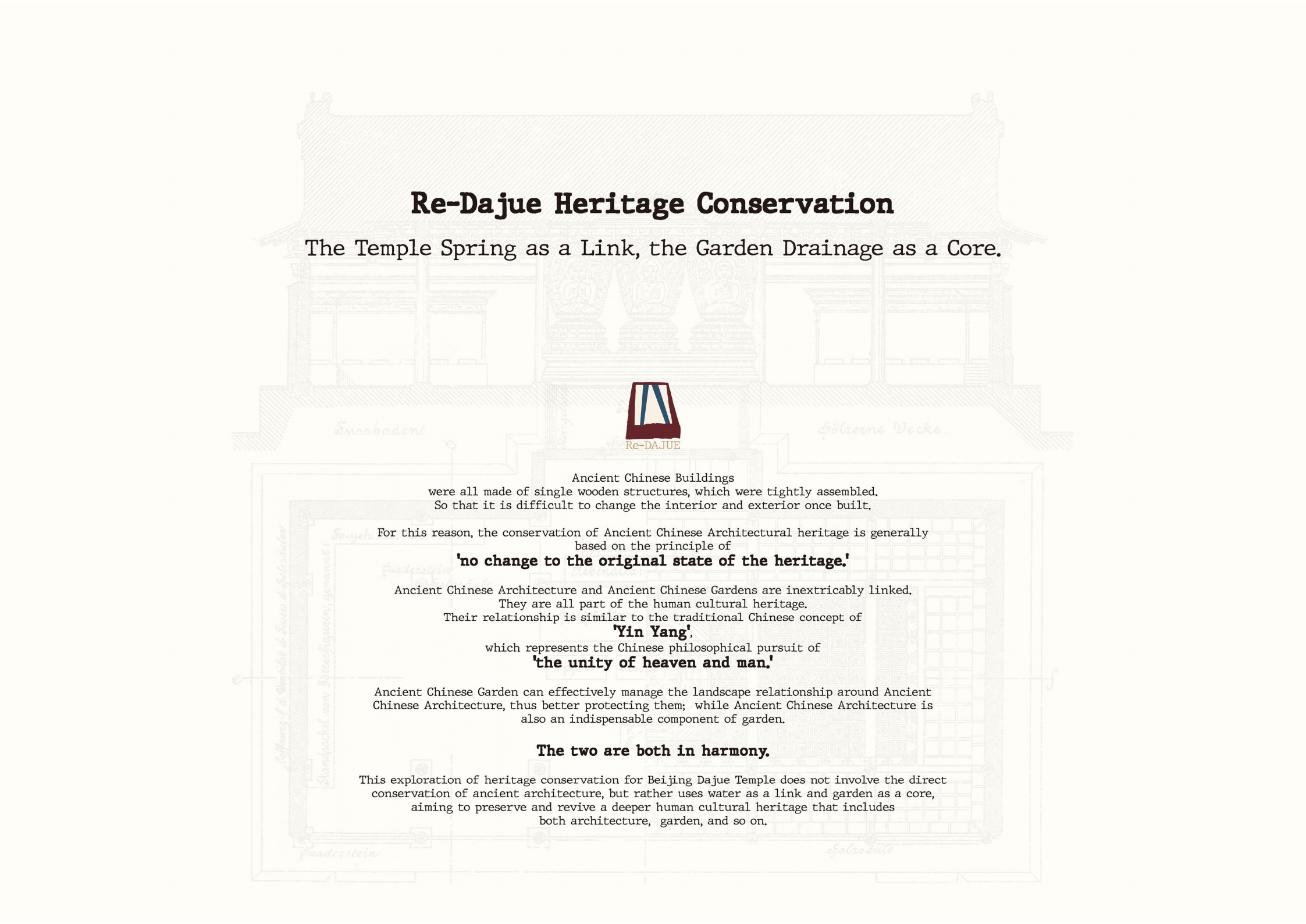
Dajue Temple, on the eastern slope of Yangtai Mountain in Beijing, was built in 1068. Renamed “Divine Spring Temple” in the Yuan and “Dajue Chan Temple” in the Ming, it was famed for its “Two Springs,” inspiring poems and paintings. Today the springs are dry, diminishing its cultural aura.
Research revealed modern artificial cement rockeries, drainage holes and ancient eroded inscriptions. Staff confirmed the garden was rebuilt mainly for drainage after floods, protecting structures but sacrificing authenticity and damaging gardens, sculptures, inscriptions, and water systems.
Our strategy combines hydrology, field archaeology, and design. ArcGIS supports restoring the system: terraces slow rainfall; runoff and springs feed the Dragon Pool; water flows south through cascades, centrally past pavilions, and north through bamboo courts before converging in the Merits-Virtues Pool. This revives the “Two Springs” and improves safety.
The plan unites science and art. Hydrological design builds resilience, while visualizations recall the spirit of springs. Restoring the “Two Springs” envisions Dajue Temple renewed, where water, gardens, and architecture form a cultural landscape.
Bio I am a landscape architecture student passionate about the ways landscapes can shape cultural identity, ecological resilience, and community wellbeing. My particular interests lie in the study and design of planting, the preservation and interpretation of heritage, and the urgent challenges posed by climate change. I approach design as both a creative and research-driven practice, seeking to balance aesthetic expression with ecological and cultural sensitivity. Through my work, I aim to explore how landscapes can honor history, nurture biodiversity, and provide sustainable solutions for the fu
Other prizes Gold Award?2024 UK International Art and Design Competition

